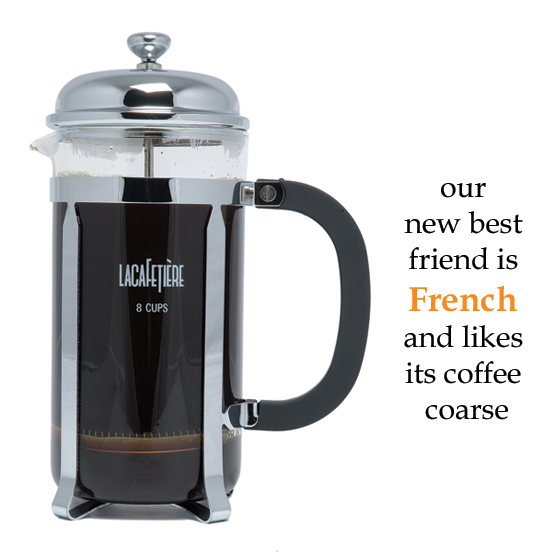Cleaning your Ekobrew in under 30 seconds
Friday, March 9th, 2012 by Anthony
Many of our Facebook friends have been asking about the Ekobrew K-Cup reusable filter. One of the big questions is whether or not they’re easy to clean. The makers of Ekobrew use its ability to be quickly cleaned as one of its main selling points, but we weren’t going to simply take their word for it — We put it to the test.
The first thing we noticed is that the bottom of the Ekobrew has no cracks, crevices or smalls spaces for wet grinds to get crammed in, trapped forever. This is very different from other brands we tested – brands that left us rinsing, re-rinsing, and rinsing some more. After all, the little cups are too small to scrub so we had to scrape the grinds out of the cracks with a fork like some sorta early primate that just learned to use tools.
Next we filled our Ekobrew and made a quick cup of coffee on our office Keurig (yes, even we have a Keurig but if you call us out on it we will claim it’s only for research purposes). The photo below is the Ekobrew immediately after brewing, filled with wet grinds.
Step 1 to cleaning the Ekobrew: 1 quick tap over the trash (or storage container if you reuse your spent grinds for composting) to get the majority of the grinds out.
As you can see, there is a layer of grinds still on the bottom. Worried? Don’t be…
Step 2: Rinse. I held the Ekobrew under the faucet while Marcie timed me. I let the water fall down into the cup first, then turned it around a few times letting the water flow through the mesh on the sides and bottom of the cup. The filter was completely clean after 25.5 seconds.
Completely clean in under 30 seconds with no scrubbing or scraping with make-shift tools necessary. That’s not too bad, especially if you’re like me in the morning – Before I get that first cup of coffee I make early primates look like Einstein.
Many of our Facebook friends have been asking about the Ekobrew K-Cup reusable filter. One of the big questions is whether or not they’re easy to clean. The makers of Ekobrew use its ability to be quickly cleaned as one of its main selling points, but we weren’t going to simply take their word for it — We put it to the test.
The first thing we noticed is that the bottom of the Ekobrew has no cracks, crevices or smalls spaces for wet grinds to get crammed in, trapped forever. This is very different from other brands we tested – brands that left us rinsing, re-rinsing, and rinsing some more. After all, the little cups are too small to scrub so we had to scrape the grinds out of the cracks with a fork like some sorta early primate that just learned to use tools.
Next we filled our Ekobrew and made a quick cup of coffee on our office Keurig (yes, even we have a Keurig but if you call us out on it we will claim it’s only for research purposes). The photo below is the Ekobrew immediately after brewing, filled with wet grinds.
Step 1 to cleaning the Ekobrew: 1 quick tap over the trash (or storage container if you reuse your spent grinds for composting) to get the majority of the grinds out.
As you can see, there is a layer of grinds still on the bottom. Worried? Don’t be…
Step 2: Rinse. I held the Ekobrew under the faucet while Marcie timed me. I let the water fall down into the cup first, then turned it around a few times letting the water flow through the mesh on the sides and bottom of the cup. The filter was completely clean after 25.5 seconds.
Completely clean in under 30 seconds with no scrubbing or scraping with make-shift tools necessary. That’s not too bad, especially if you’re like me in the morning – Before I get that first cup of coffee I make early primates look like Einstein.


























